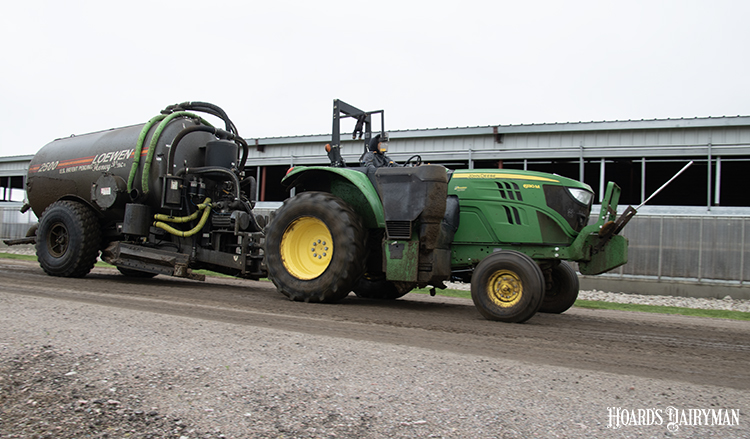
Manure application is a great option for fertilizing crop fields, especially in this era of high commercial fertilizer prices. During the Minnesota Agricultural Water Resource Center’s Nutrient Management Conference, Melissa Wilson touted the benefits of manure.
She said that people often think of manure as a fertilizer source for nitrogen, phosphorus, and potassium, but it also provides secondary nutrients and micronutrients that a plant needs. In addition, it is a soil amendment, returning carbon to the soil. Research has shown it can help improve soil aggregate stability, water holding capacity, and more.
Wilson also advocated that it is “locally produced.” “As long as we can get it back into our systems . . . it can be a really nice circular process,” she said.
However, there is a catch. “Manure is more complicated than fertilizers,” she said. “That’s one of the reasons why people may have trouble wanting to use it.” Nutrient availability can be variable, and nutrient ratios don’t directly match the plant needs. She said, because of the odor and difficulty to handle, some people may consider it waste and not a resource.
Wilson shared keys that can help farmers get the most value from their investment when it comes to using manure. One is to deliver nutrients to the fields that can use it most. While it is sometimes easier to let location dictate manure application, soil testing will help determine which fields would benefit more from this organic fertilizer source.
“Value manure as a complete nutrient source,” the University of Minnesota professor said. “You will get the most bang for your buck in fields that need more of the nutrients.”
Wilson shared a scenario that compared the application of liquid swine manure in two fields to show that manure hauling costs may not always be as prohibitive as they seem. Field 1 was near the barn, less than one mile away. Field 2 was 4.5 miles away from the main barn and manure storage.
As for nutrient needs, Field 1 tested high for phosphorus and potassium and just needed nitrogen at 150 pounds per acre. Meanwhile, Field 2 needed 150 pounds of nitrogen, 150 pounds of phosphorus, and 140 pounds of potassium per acre to meet the requirements of the corn-soybean rotation.
Manure was injected at a rate of 4,500 gallons to the acre. The manure supplied 150 pounds of nitrogen, 99 pounds of P2O5, and 144 pounds of K2O per acre. She used a price of 1.5 cents per mile for hauling costs, up to one mile, and then a 0.4 cent surcharge for every mile after that. That meant that application cost was $67.50 per acre for Field 1 and $130.50 an acre for Field 2.
For Field 1, the value of the manure was only in the nitrogen; there was no benefit for the phosphorus or the potassium since the soil already had enough of those nutrients, Wilson explained. “We are applying it, but not getting any value for it,” she said.
The nitrogen replacement value is $127.50, minus an application cost of $67.50, for an overall replacement value of $60 per acre in Field 1.
Meanwhile, in Field 2, she assumed value for the nitrogen, phosphorus, and potassium. There was $127.50 in value from the nitrogen, plus $91 per acre for the potassium. Although the manure won’t fulfill the whole phosphorus requirement, there is a value of $68.31 per acre for the phosphorus in that application.
The hauling costs for that field are greater at $130.50 per acre, but when subtracted from the fertilizer replacement value of the manure, the benefit per acre was $156.31. Wilson said that with her calculations, the manure could have been hauled up to 9 miles and would still have had a higher replacement fertilizer value than Field 1.
“It goes to show that hauling is not as expensive as people think if you are getting more value from the potassium and phosphorus of the manure. That is something to think about,” Wilson concluded.








